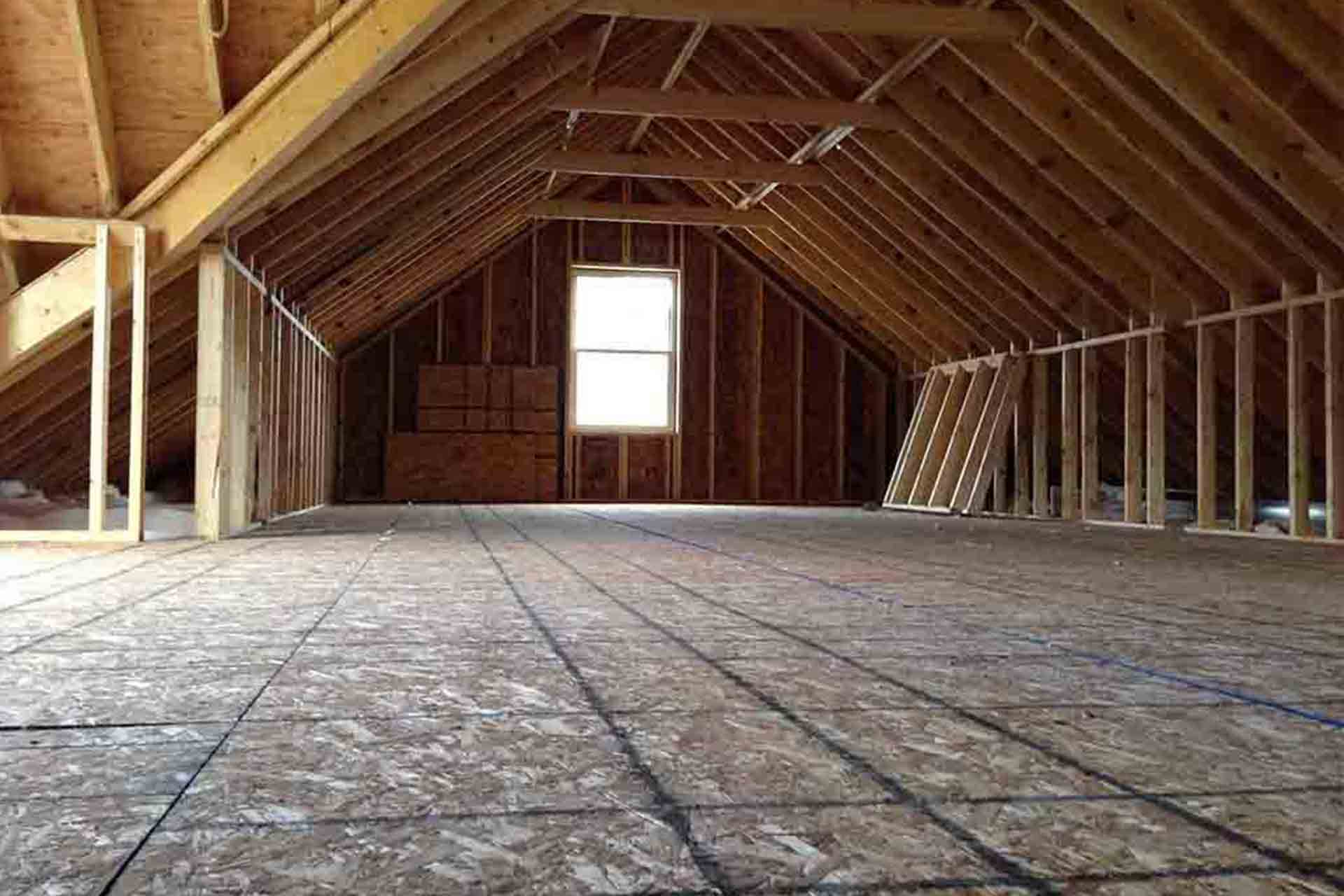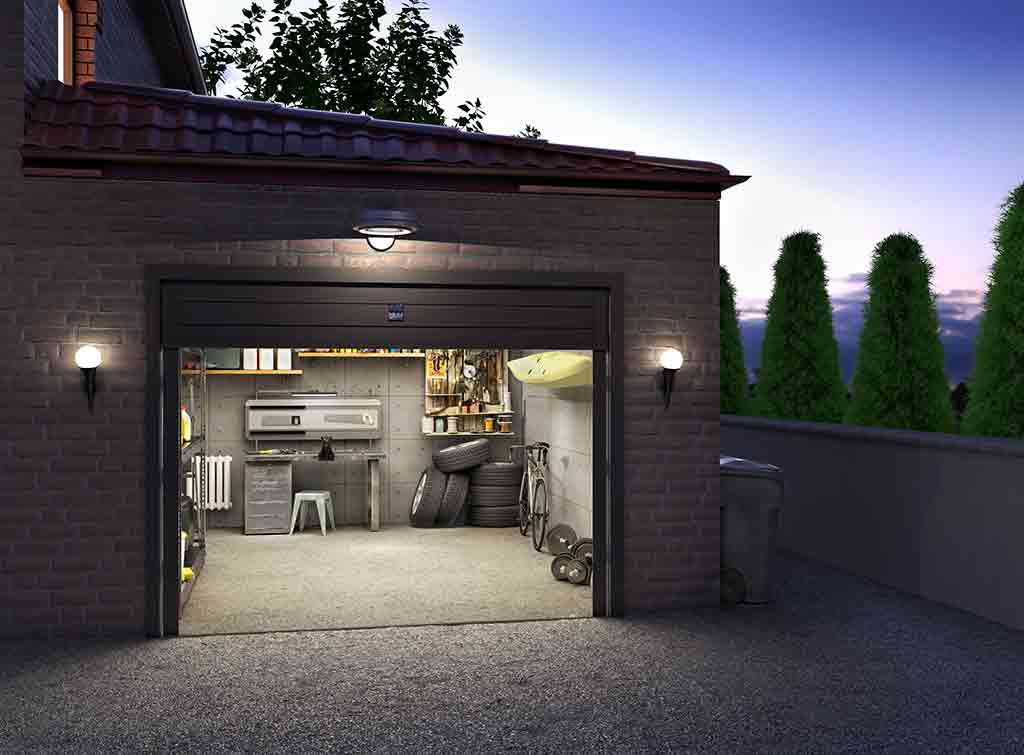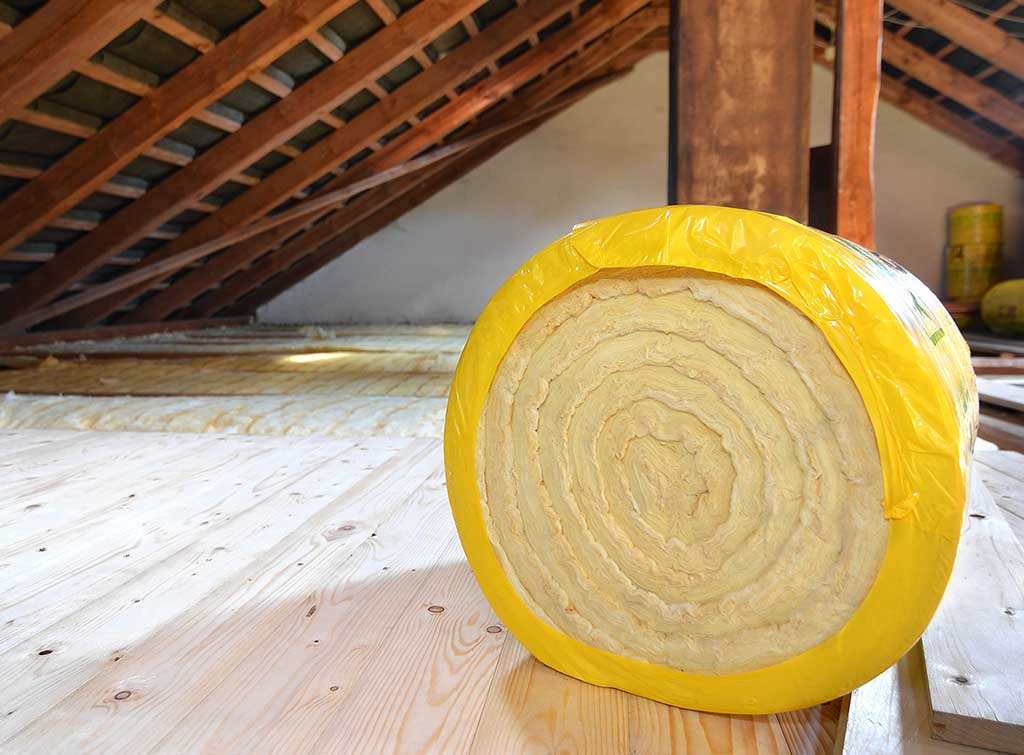Blog>Planning Guides>Planning your loft storage set up
Last updated: 16 August 2024
Planning your loft storage set up
Transform your redundant loft into an organised storage hub with our planning tips and tricks.
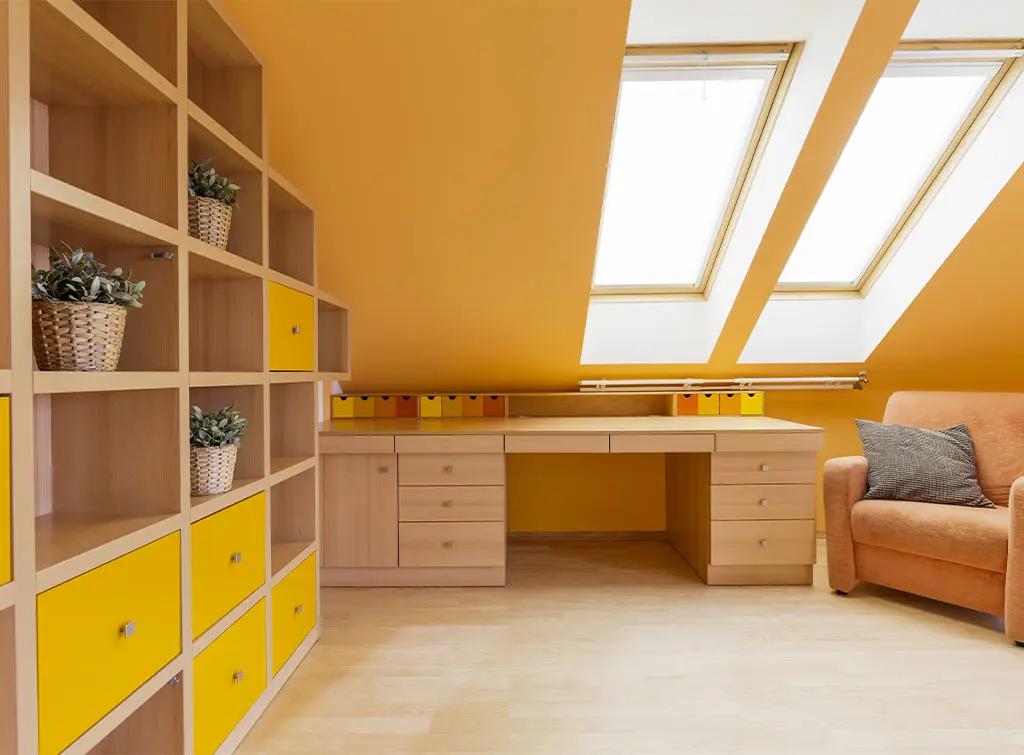
Lofts are useful spaces to store your possessions and keep your home neat, well-organised and clutter free. However, your loft storage set-up needs careful planning to get the most out of the space and help keep track of what's up there.
Let us guide you through the process, including boarding out tips, clever loft storage solutions, and how to approach the project.
How to prepare for loft storage
Lofts are valuable spaces for stashing larger items and possessions you only need now and again. Think camping equipment, Christmas decorations, luggage and out-of-season clothing.
Whether you're planning a loft conversion or need a clever loft storage set up, preparation is key.
Three planning steps for loft storage set up:
Firstly, you might need to clear and declutter your loft if it's packed to the rafters
Secondly, laying loft boards will allow you to be able to fully make use of your loft for storage
Finally, clever loft shelving ideas will help you maximise awkward sloped ceilings and angled alcoves
Let's take a look at these steps in more detail.
Clearing your loft space
The first job is to clear and declutter your loft space. Get rid of everything you don't need by following these simple steps:
Make an inventory
Decide what to keep and what needs to go. It's time to be ruthless and get rid of old clothes, broken lamps, shabby suitcases and anything beyond repair.
Donate and recycle things you don't want
Put the possessions you no longer want or need into piles.
Any clothes or crockery in good condition can be donated to charity and old gadgets and furniture can be recycled.
Perhaps gift any sentimental items, antiques, or heirlooms to a family member or friend who will put them to good use.
Be selective
By this, we mean scaling back on children's artwork, old school books and diaries you or your family have ever created.
Keep hold of memories by holding on to a few favourite ones. Otherwise, take photos of the rest and do a digital collage or store them on a memory stick.
See the tradespeople we've checked and recommend for your job
Laying loft boards
Laying loft boards is an ideal solution if your home needs more storage.
It can create extra storage space
Improve the storage you've already got.
Offer a cheaper alternative to external storage solutions
Not only does boarding your loft space create more usable storage, but it can add other benefits, too.
Loft boarding cost
Whether you’re looking at loft boarding prices to make your attic a usable space, or you’re looking to add value to your property, use this loft boarding cost calculator to help you make an informed decision.
Increased property value
Good storage is a big selling point. A home full of clutter can put off prospective buyers and signal that the property lacks storage space.
Boarding out the loft and creating a place for everything is a good move if you're considering selling. It'll increase your property's appeal with potential buyers and could add value to your home.
Improved energy efficiency
Laying loft boards can also help improve your home's insulation, increase energy efficiency, and lower your heating bills.
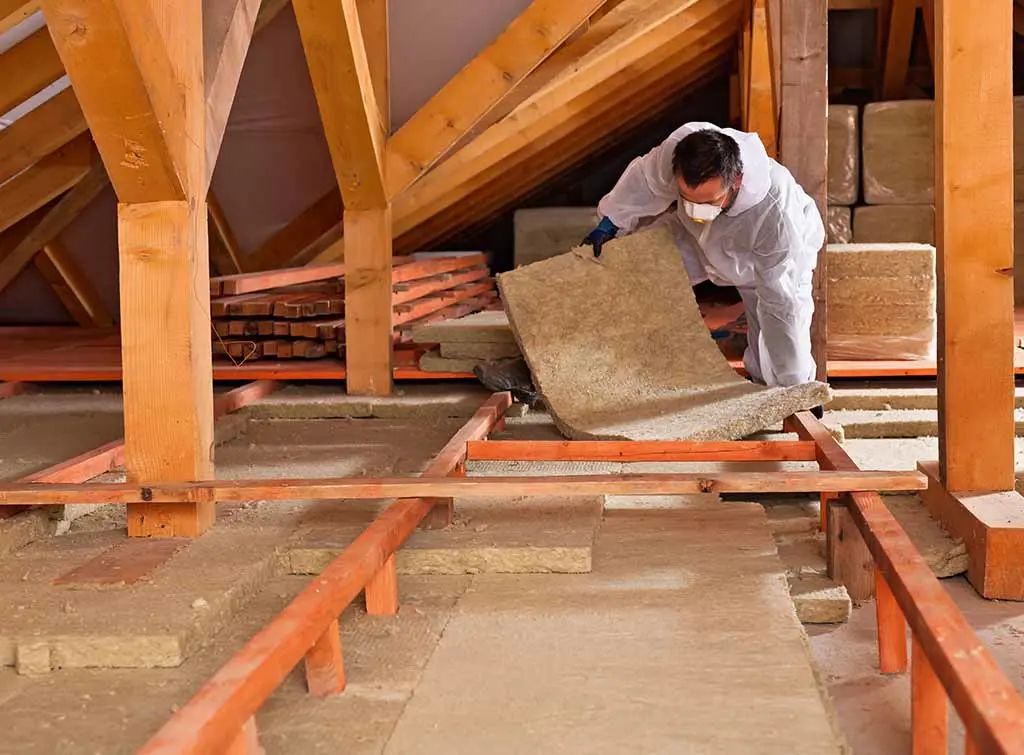
Easier access and improved safety
Loft boarding for storage also makes it easier to access stored items by providing a safe and stable surface to walk on.
Storing belongings in a loft space that hasn't been boarded can be dangerous and compromise the loft insulation.
How to board a loft
Boarding a loft can create a secure, clean storage zone, allowing you to maximise space elsewhere in your home.
Here are a few considerations for your loft boarding project.
A loft boarding specialist will consider all of these aspects:
Obstacles: Water pipes, gas pipes, wires and cables often feed throughout your loft space. When boarding your loft, these must all remain accessible and not covered by the boards
Insulation: The recommended depth for loft insulation is 270mm. A well-insulated home is more energy efficient which helps to reduce your energy bills. Before boarding your loft, check the insulation depth. It will need to be topped up if it doesn't meet the current standard
Measuring up: Your loft space will need to be carefully measured up for the required materials. This includes usable width, length, and distance between trusses and joists to calculate the number of loft boards needed
Materials: Chipboard is a common choice for loft boards as it's load-bearing and moisture resistant. Loft leg supports may also be needed if you're having a raised loft boarding system. These attach to the top of the trusses and joists, allowing the loft boards to sit above the insulation to avoid compressing it
Find out how to board a loft yourself, or contact a loft boarding specialist near you.
Loft boarding for storage
Once you've had your loft boarded, here are a few extra tips to make the most out of your loft storage:
Consider widening the loft opening to make it easier to use
Install a safe and easy to use ladder. This will make accessing your loft less difficult and save you time
Add lighting to increase visibility. This way, you will be able to spot what you are looking for quickly; plus, it will help when organising your loft
Look into storage boxes and shelves to utilise the space available. This will also help with keeping your loft tidy and clean
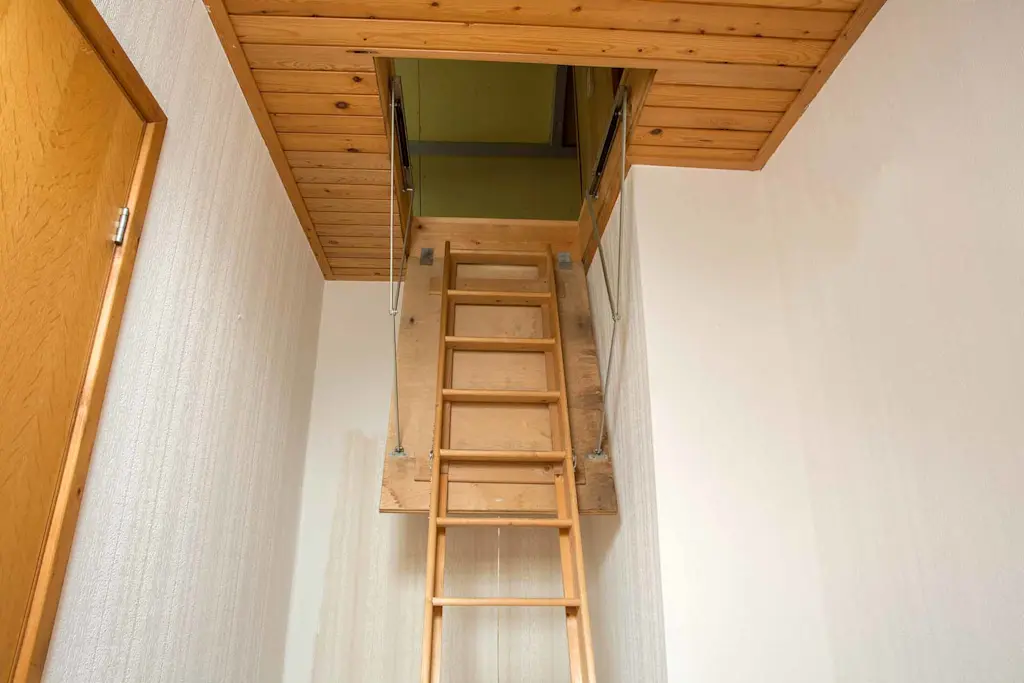
Contact a loft storage specialist who can advise you on getting the most out of your loft space.
Pop your postcode in the search box below and find approved loft storage experts in your area.
See the tradespeople we've checked and recommend for your job
Loft shelving ideas
Once you've decided what to store in your loft, it's time to look at loft storage ideas. Wall storage ideas are a great way to clear floor space and create a cosy mood.
Remember, sloped ceilings and angled alcoves demand clever storage solutions—and specialists will have many great ideas!
Here are a few brilliant loft shelving ideas suitable for a loft conversion:
Custom made shelving
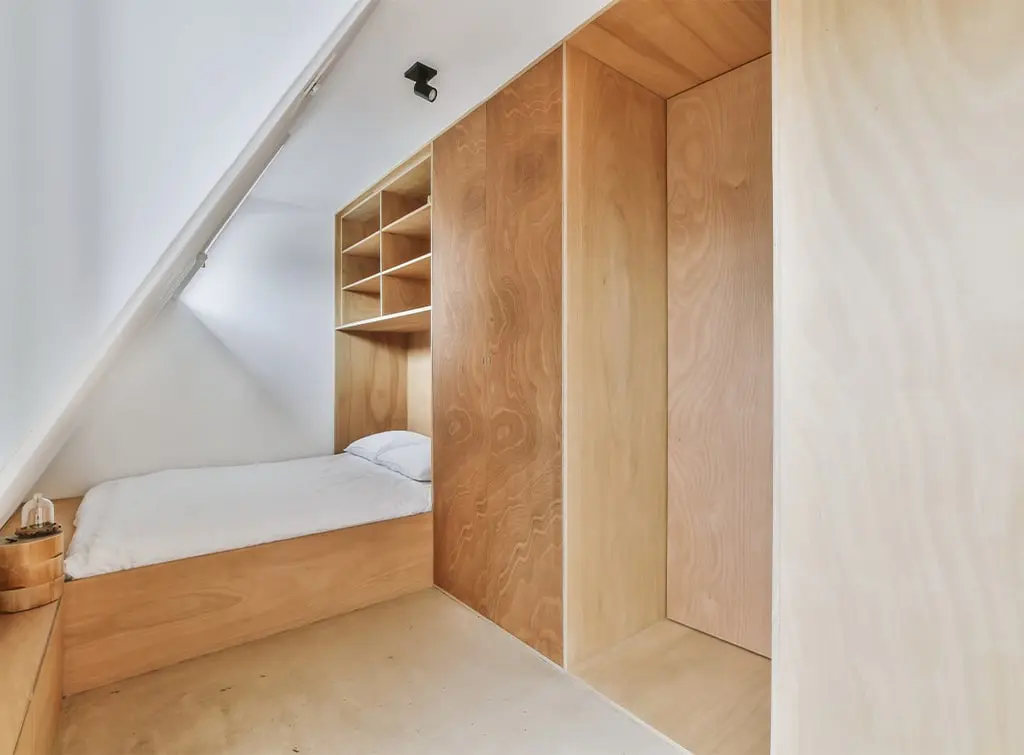
Use loft eaves with custom-built wardrobes in a bedroom loft conversion.
Tailor made closets can include built-in cupboards, drawers and shelving, designed exactly to your requirements.
A wardrobe that stretches across the length of the wall can be adapted to fit into your room and storage needs.
Library shelving
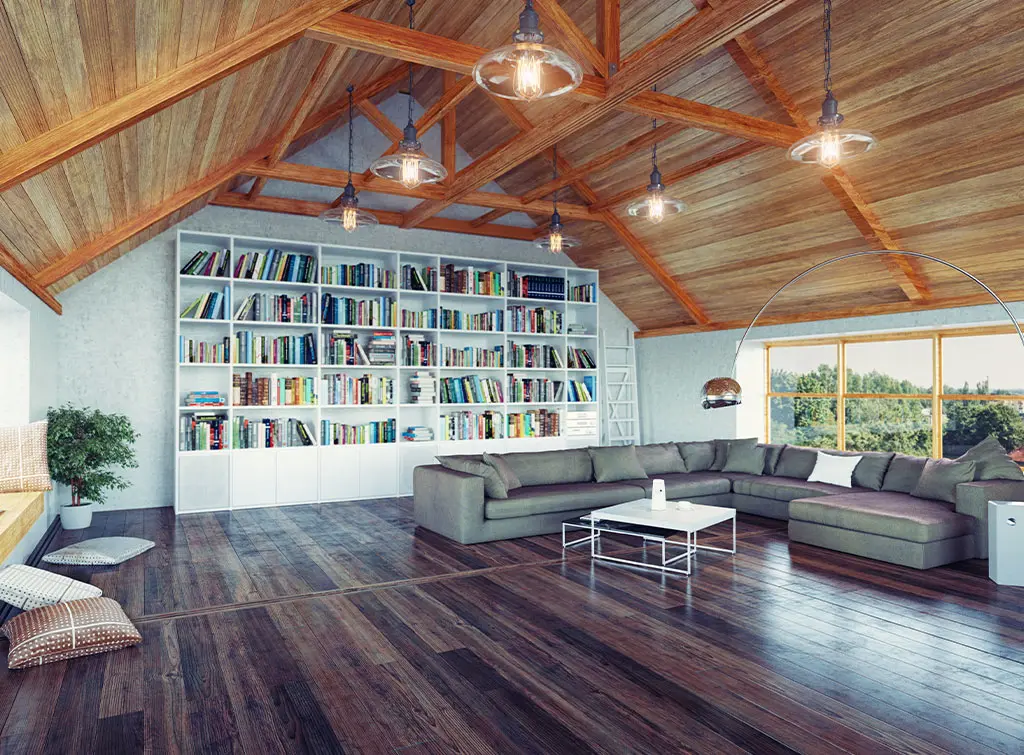
Your prized collection of books don't belong in cardboard boxes. Cardboard boxes stashed in a loft can grow mouldy and attract insects.
Consider installing shelving symmetrically across the wall and placing books in alphabetical order, by genre or colour coordinated.
Modular wall shelving

A storage wall is popular for homeowners wanting to max out the loft.
These shelves can often be bought by block, allowing you to fit them into lofts of all shapes and sizes.
For loft spaces that are boarded out, consider the following:
Choose sturdy plastic containers with lids to protect against pests and fluctuations in temperature and humidity
Transparent boxes allow you to see what is inside, or you can buy boxes in different colours to zone your loft storage
If your loft storage is clean enough, add hanging rods to store off season clothing. Remember to hang all the clothes inside plastic protectors
Measure storage bins and loft storage solutions so you know everything will definitely fit
FAQs
What can you store in a loft?
Boarding out your loft offers invaluable, safe, and clean storage space for a variety of items.
These include Christmas decorations and seasonal items you only need to bring out occasionally, such as camping equipment and suitcases.
Extra clothes should be stored appropriately to deter insects and mould. You can also store boxes of memories and files in sturdy plastic boxes with lids.
How do I strengthen my loft for storage?
Before boarding your loft, it is important to determine if your loft floor can support the weight of the items you plan to store.
The floor of a loft is usually designed to support the weight of a person moving around in the loft. But when you add weight to this, it can cause the floor to weaken and cause problems.
By reinforcing your loft, you will protect your ceiling while creating more space for storage.
Loft reinforcement measures include:
Inspecting the joists and loft flooring for damage or rot and replacing any joists not in a good condition
Making sure the materials used are strong enough to hold the weight of the items you plan to store in the loft
Using loft supports and loft legs to raise your loft floor and create space for storage
Ensuring everything is properly secured
What should you not store in a loft storage set up?
While lofts are perfect for providing extra storage space in your home, there are a few items you shouldn't store in a loft:
Electronics - these can overheat in a loft which is susceptible to very unstable temperatures
Important documents - fluctuating humidity levels can lead to damaged documents. Items can become damp, fade or stick together
Food and wine - temperatures can get too warm and spoil wine while rodents will feast on your food items!
Paint - can become hazardous and heat to a dangerous level in a loft space
Wooden furniture - can warp and crack in the hot and humid conditions of a loft. Mould and woodworm can also cause irreparable damage
Cardboard boxes - can ruin your belongings and attract pests. They can also become damp, mouldy and disintegrate if you try to move them
Ready to take upgrade your loft storage set up? Enter your postcode below to find loft storage companies in your area.
See the tradespeople we've checked and recommend for your job
More Planning Guides
See the tradespeople we've checked and recommend for your job
